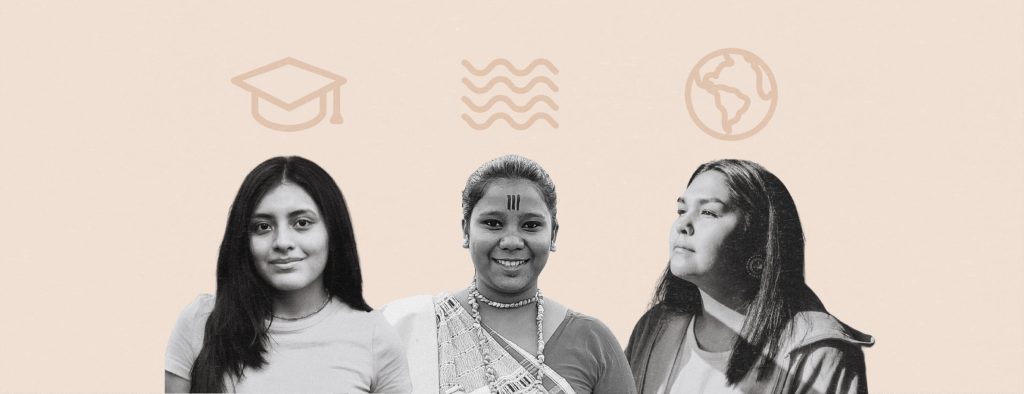
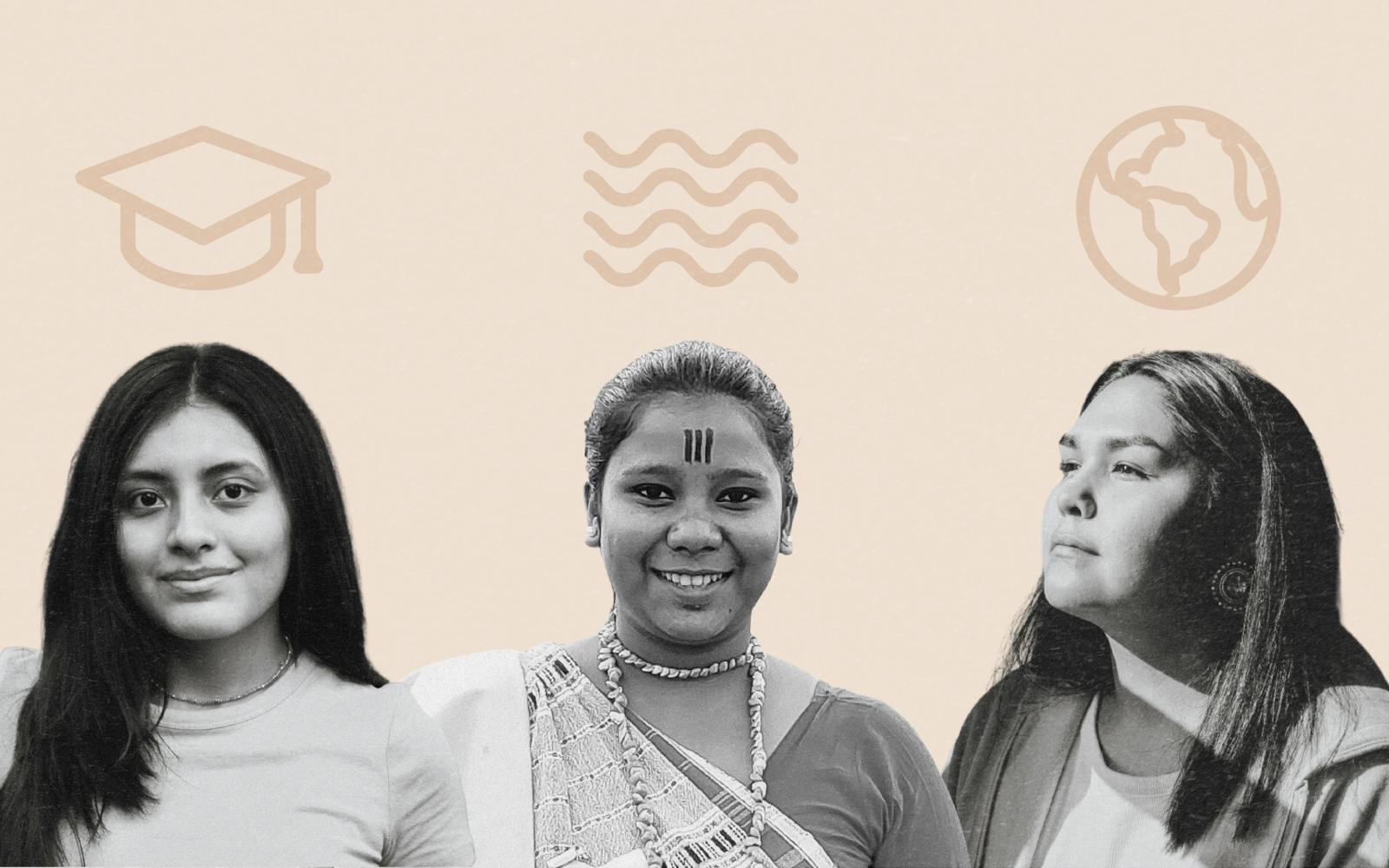
Alice Paredes, Archana Soreng, and AnnaLee Yellow Hammer are three youthful Indigenous women who’re elevating their voices and main change of their communities.
From violence and discrimination to poverty and local climate change, Indigenous women face extra hazard than most of us. however that’s solely a part of the story.
throughout the globe, Indigenous women are reclaiming the respect, rights, and illustration they deserve.
“rising up, being an Indigenous feminine adolescent felt like a triple tragedy,” Alice Paredes says of her childhood in Lima, Peru. She and her household had been shamed for being Indigenous and recognized as derogatory names for talking their native Quechua in public. “however as I obtained older, i started to reconcile with my identification and be pleased with my roots and my heritage,” she says. “I obtained here to an understanding that not solely do I even ought to reconcile with my tradition, I even ought to actively contribute to it.”
So, at simply 15 years previous, Alice based her personal nonprofit, ConexEDU, to assist youngsters in rural areas — particularly Indigenous youth — acquire extreme quality training. final month, she joined virtually three,000 women from one hundred twenty nations for the UN basis’s woman Up management Summit, the place she witnessed firsthand how “women’ empowerment can take many shapes and kinds.”
AnnaLee Yellow Hammer’s path to activism additionally started at a youthful age. As a member of the Hunkpapa band of the Lakota, AnnaLee lives on the Standing Rock Indian Reservation, which stretches throughout 2 million acres on the border of North and South Dakota. At thirteen, she launched an internet primarily based petition in the direction of the development of the Dakota entry Pipeline shut to the tribe’s sacred Black Hills and Missouri River, writing:
My buddies and that i have performed inside the river since we had been little; my good grandparents raised chickens and horses alongside it. When the pipeline leaks, it can wipe out crops and animals, smash our consuming water, and poison the center of group life for the Standing Rock Sioux.
better than one hundred fifty,000 of us throughout the globe ended up signing their petition, which AnnaLee and her classmates hand-delivered to U.S. officers after a 2,000-mile protest from the reservation to Washington, D.C.
as we converse, AnnaLee is one in all better than 850 youthful of us throughout a hundred nations who make up the UN basis’s youthful local climate Advocates (YCA), a worldwide community of youth leaders working in the direction of a sustainable future for our planet.
“For me, local climate movement is reclaiming areas for Indigenous communities,” says Archana Soreng of the Kharia tribe in Odisha, India. As a member of the UN Secretary-primary’s Youth Advisory Group on local climate Change, Archana is elevating her voice as an environmental activist on behalf of uncared for Indigenous communities all through the place. “Indigenous of us should be leaders of local climate movement and by no means victims of local climate insurance coverage policies,” she says.
From their homes in Peru, Standing Rock, and India, these three youthful women problem of us to rethink what they discover out about Indigenous communities and share how a mannequin new period of activists is harnessing their collective power as leaders, change-makers, and ambassadors of a extra sustainable life-style.
They spoke just presently with UN basis forward of worldwide Day of the World’s Indigenous Peoples.
inform us about your group and your tradition.
Alice: I come from a small, rural group in Apurímac, which is a area in central Peru. we now have a rich tradition with distinctive traditions, customs, beliefs, and values, and the language we converse is Quechua, which is little question one in all many better than 50 languages spoken in Peru. Our tradition has prevailed for simply a few years regardless of political, social, and even geographical modifications. And we’re very fortunate that youthful generations like me can nonetheless be taught and maintain our tradition, however most significantly share it with the world. What unites us is a strong sense of group and aim. Like we’re saying in Quechua, “Huk Kallpala.” It means, “we’re a single stress.” and that is little question one in all many values that has caught with me through residing in Lima, which is the capital in Peru.
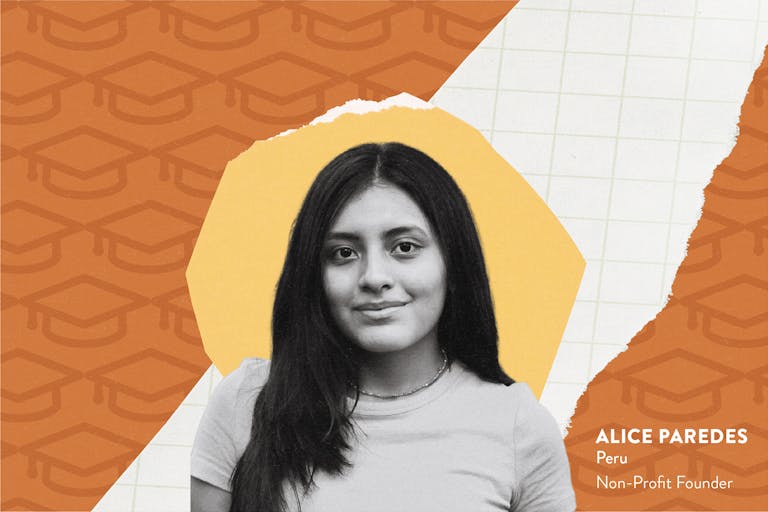
Archana: I come from the Kharia tribe in Odisha, India. In our worldview, we aren’t solely a part of nature, we’re embedded with nature. Nature is a supply of identification, tradition, custom, and language. not like fully different communities, land and nature aren’t thought of a enterprise commodity. Most of our work has been round agriculture practices and forest-primarily based livelihoods. We maintain nature the most interesting method nature takes care of us. Our tradition, songs, and languages additionally come from nature.
AnnaLee: I reside on the northern portion of the Standing Rock Sioux Nation in a metropolis recognized as Fort Yates, North Dakota. i’ve lived right here all my life.
proper now there is a gaggle of mentor artists who’re spray-painting murals round our group. it is lovely to see parts of our tradition on buildings round metropolis. It makes me pleased with who i am.
What do you’ll like of us understood about Indigenous communities like yours?
AnnaLee: I really feel that a quantity of non-Indigenous people are beneath the notion that all of us get a month-to-month look at from the federal authorities, free housing, free well being care, or nonetheless reside in tipis. a lot of our Indigenous communities face the identical factors, however we’re additionally very distinctive as properly. With the newer generations, I really feel like there is an enormous push to reclaim our language and tradition. all of us know that the reply to most of our factors is inside our personal tradition. We understand the generational trauma that has occurred to our of us and that we now ought to heal from all of it as a approach to maneuver forward in a healthful method.
“all of us know that the reply to most of our factors is inside our personal tradition.”
AnnaLee Yellow Hammer
Indigenous youth chief and activist
Archana: typically of us do not think about that there are Indigenous of us in Asia and in India particularly. For years, Indigenous communities have been seemed down on for our tradition, our language, and our traditions. we now have been informed that we’re backward or savage as a consequence of of our life-style, however our practices — like pure farming, defending biodiversity, and conserving forests — at the second are being appreciated and acknowledged. significant participation of Indigenous communities should come from a spot of respect.
Indigenous of us should be leaders of local climate movement and by no means victims of local climate insurance coverage policies. I even ought to make it potential for our voices are being heard and we’re being taken severely as a consequence of the communities which may be the least contributors to the local climate disaster are typically most likely the most affected by it. we now ought to cease tokenizing the participation of Indigenous of us and make them a part of the full policymaking course of. For me, local climate movement is reclaiming areas for Indigenous communities.
Alice: although better than 5 million Indigenous of us reside in Peru, we’re seen and dealt with as minorities. we’re diminished and discriminated in the direction of. I want of us understood that Indigenous tradition should be as revered as mainstream society. there’s rather a lot we will contribute, not solely our customs and traditions, however additionally invaluable information which will assist deal with most likely the most pressing factors that humanity is dealing with.
We think about in forging a deep relationship with nature, which we name Pachamama, and our practices have spirituality and sustainability at coronary heart. It’s why our communities are extremely resilient to range. We solely use what we now have and we eat solely what we’d like so our communities are terribly resourceful and impartial.
“Indigenous of us should be leaders of local climate movement and by no means victims of local climate insurance coverage policies.”
Archana Soreng
Member, UN Secretary-primary’s Youth Advisory Group on local climate Change
What are simply a few of the largest factors affecting your communities as we converse, and significantly youthful members of your communities?
AnnaLee: Poverty, alcohol, medicine, and the scarcity of housing. although there are some jobs, there are pretty simply a few limitations to being employed, similar to a consequence of the scarcity of transportation, little one care, the every day price of attending to work when it is a should to journey from one in all many outlying communities to at least one in all our tribe’s casinos. whereas you uncover your self solely making considerably over $10 an hour and ought to commute anyplace from 30+ miles a day, it makes it very troublesome. which will not be a livable wage right here.
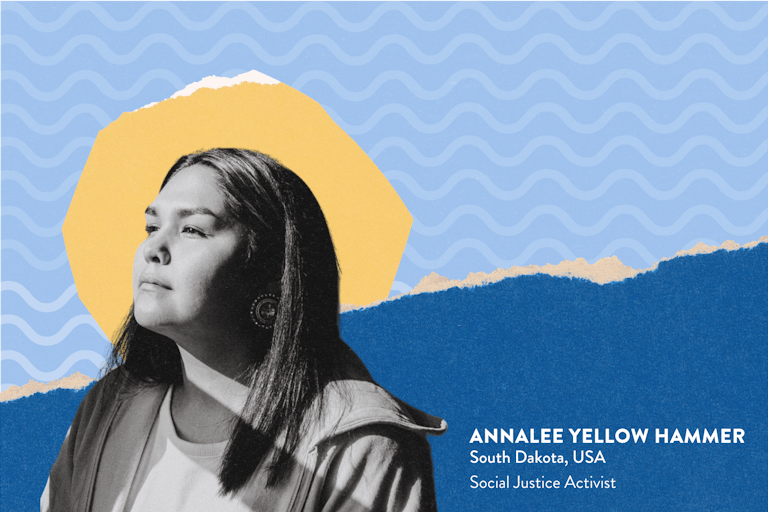
There aren’t a quantity of alternatives for our youthful of us right here on the Standing Rock Reservation. Many youngsters and youth are left unattended or unsupervised. Some are left to look after his or her siblings or youthful kin. Our youth truly ought to reclaim our conventional life-style. all of us know the significance of our language, ceremonies, and tradition, however are typically criticized and lack the assist from simply a few of the older period. At occasions, I really feel like there is a little bit of a generational divide.
Archana: The impacts of local climate crises make us extra susceptible — whether or not it is drought, floods, cyclones. It ends in pressured migration to the cities on the worth of our identities. one other risk is extractive development initiatives, that are taking away the land and the forest from Indigenous communities, or evicting communities altogether, which have enormous repercussions when it entails conventional information, well being, and our of us.
Alice: the predominant motive my household immigrated from the Andes to Peru is to current elevated instructional alternatives for me, for my sister, for my cousins. and that is little question one in all many largest factors: extreme quality training will not be provided in rural communities throughout Peru. It’s a draw again that can be very particular to Indigenous communities as a consequence of training is usually not obtainable in Indigenous languages. youngsters are pressured to desert their tradition indirectly as a approach to develop to be educated. The training system right here in Peru has not created an space to welcome Indigenous cultures, languages, or the multicultural communities we now have right here. and that is important.
sadly, there aren’t many people — not even adults — who’re talking up for the youngsters who’re being disenfranchised from their proper to training in Indigenous communities. If it’s not them, then who? It’s me, it’s us, it’s youthful of us inside Indigenous communities who ought to take movement. I always noticed training as my alternative to rise out of poverty. And, fortuitously, I obtained a scholarship that allowed me to be taught English and get a very good training. And that’s why I’m right here, chatting with you, as a consequence of it has empowered me to converse up. it is a necessity that we take up this residence and elevate our voices, our opinions, and the issues that we now ought to say in politics, in decision-making, and in our communities.
every of you is a strong advocate for Indigenous communities, championing all the things from local climate movement to gender equality to training. How did you first get entangled in activism round these factors?
AnnaLee: In 2016, after I first heard regarding the Dakota entry Pipeline, i used to be damage and that i used to be offended, however I knew I wished to assist. My grandfather, the late William “Glenn” Yellow Hammer Jr., grew up in an space recognized as massive Lake. His household was displaced when the army Corps [of Engineers] created all of the dams alongside the Missouri River. Twice now the army Corps has proved to us that our lives are expendable and that we don’t matter.
after we created our petition to the army Corps of Engineers on Change.org, we didn’t understand how enormous this movement would develop to be. We knew the power of social media, however we didn’t count on the world to face with us in return. to assist amplify our voices, we decided to do a run from Cannon Ball, North Dakota, to Washington, D.C., helpful-ship that very petition to the army Corps of Engineers headquarters. through this full movement, i’ve gained so many mentors and lifelong buddies. It has taught me rather a lot.
Alice: rising up, being an Indigenous feminine adolescent felt like a triple tragedy as a consequence of not solely is your voice disregarded, however you are feeling that you only can’t do a lot about it as a consequence of society tells you that you only don’t have a invaluable opinion, in any other case you don’t have something good to contribute to the group, when in fact you do. you have obtained rather a lot to wrestle for. after i might converse a phrase in Quechua, of us would say derogatory issues to me and my household. That marked me as a little one, and it’s nonetheless one factor I wrestle with. I rejected my cultural identification all through my childhood. That’s exhausting to expertise, particularly whereas you’re attempting to form your identification through your teenage years. however as I obtained older, i started to reconcile with my identification and be pleased with my roots and my heritage. I obtained here to an understanding that not solely do I even ought to reconcile with my tradition, I even ought to actively contribute to it.
“rising up, being an Indigenous feminine adolescent felt like a triple tragedy.”
Alice Paredes
Youth training advocate
If I’ve come this far, it is my responsibility to assist others. it is my responsibility to assist them and be a voice for them. and that is precisely what I even ought to do.
Archana: If I mirror down deep down on how I obtained into this, i really feel there are two issues: my private expertise of being launched up in a household the place my grandfather was a pioneer of group forest safety practices and [my being] a staunch believer that till and besides we now have a sustainable relationship with nature and forest, we’ll not be going to have a sustainable life. My father was an Indigenous well being care practitioner. He acknowledged that is conventional information we obtained from our ancestors, which led me to know extra about our tradition, our traditions, and our language. after I misplaced my father, I felt it is our period who should be taught from our elders so we will swap their conventional information and practices to the subsequent period.
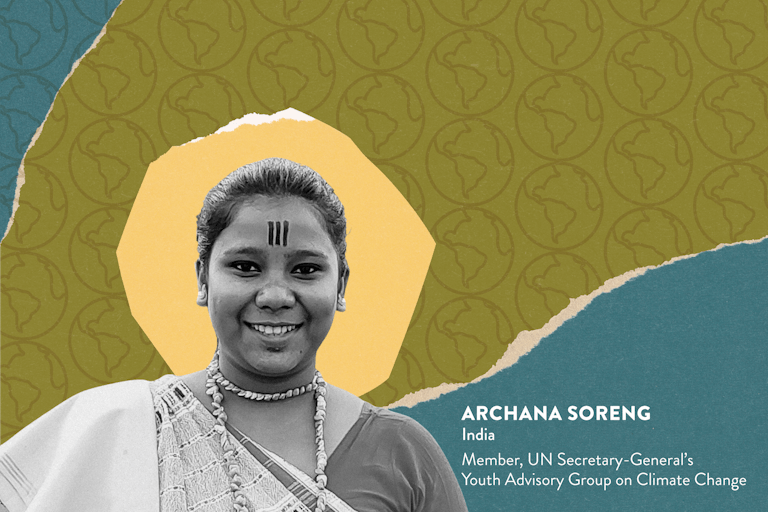
Why is it so very important that Indigenous peoples — particularly Indigenous women — are absolutely included relating to tackling our largest challenges?
AnnaLee: traditionally, women have always been the backbone of our Indigenous communities, however in modern society it is not seen that method. relating to the numerous factors the world is dealing with, it is crucial that we now have all people on the desk from all walks of life, no matter their gender identification, socioeconomic standing, race, and so forth.
Alice: Our beliefs and traditions are additionally empowering for every member in our group, particularly women. We see a quantity of examples and residing testimonies of strong Indigenous women and feminine leaders working inside and exterior the group, defending the rights of their of us and simply working to create a better actuality for his or her counterparts and all people else.
Archana: Even in case you see Indigenous of us represented, it’s largely males. however Indigenous women are these who’re typically contributing most likely the most. women have been the backbone of Indigenous communities, whether or not it’s local climate adaptation, caring for meals, [or] earnings period. one in all many key issues that truly should be emphasised is intergenerational dialogue.
The UN protects and promotes the rights of Indigenous communities throughout the globe, serving to Ingigenous peoples shield their rights and maintain their distinct cultures and life-style.

